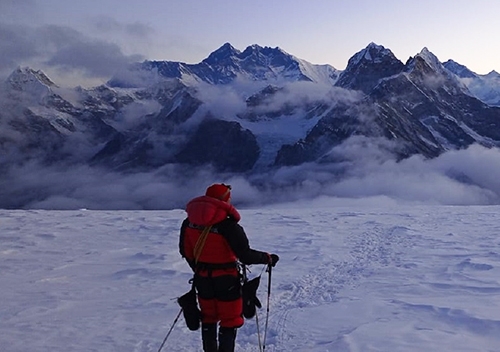Why does choosing the Right Climbing Season matter?
Choosing the right season for peak climbing in Nepal is essential for your safety, success, and overall experience. In the Himalayas, especially at high altitudes, weather conditions can change quickly even within a single day. You may leave in the morning with blue skies and return with extreme winds, clouds, or heavy snow.
The weather is the foremost factor in making a successful summit. Climbing during the wrong season can put you in extreme temperatures, exposure to heavy snow, strong wind, and rain, causing hazards or an impossible climb. Stable weather has fewer storms, lower avalanche risk potential, and safer trails. Missing your season window can hold you at base camp because of bad weather or require you to turn back before the summit.
April through May is regarded as the best time of year to go climbing in Nepal. During this time, the strong jet stream winds that dominate the Himalayas in winter begin to calm down, especially in May, creating a safer window for high-altitude ascents. Most successful summits in Nepal happen in the third week of May.
For peaks below 7,000 meters, autumn (September to early November) is the second-best season for climbing. However, it’s not ideal for peaks above 7,000 meters, which is why professional climbers and expedition teams carefully plan their ascents within these narrow seasonal windows.
At Footprint Adventure, we understand how important it is to time your climb perfectly for a safe and successful ascent. As a fully licensed and certified Nepali company with years of experience organizing and leading peak climbing expeditions, we are experienced government-certified guides trained in first aid, mountain safety, and rescue. We provide detailed trip briefings, maintain regular communication during your climb, and have emergency support in place, because your safety always comes first.
Best Time of the Year for Climbing Peaks in Nepal
Spring Season (March- May)
The pre-monsoon dry season in Nepal lasts from March to May. Peak climbing in Nepal is most enjoyable in the spring when the weather stabilizes, the skies clear, and the climbing conditions get better.
After winter peaks, the days become warmer and sunnier, but nights are still cold at high elevations. At Everest Base Camp, for example, daytime peak climbing temperatures in May can reach up to 15°C, while nighttime lows may still drop to –15°C. Nonetheless, while nights may be chilly, spring days are bright, dry, and usually not rainy. This gives excellent visibility for climbers to see the routes and adjust how they move and be safe.
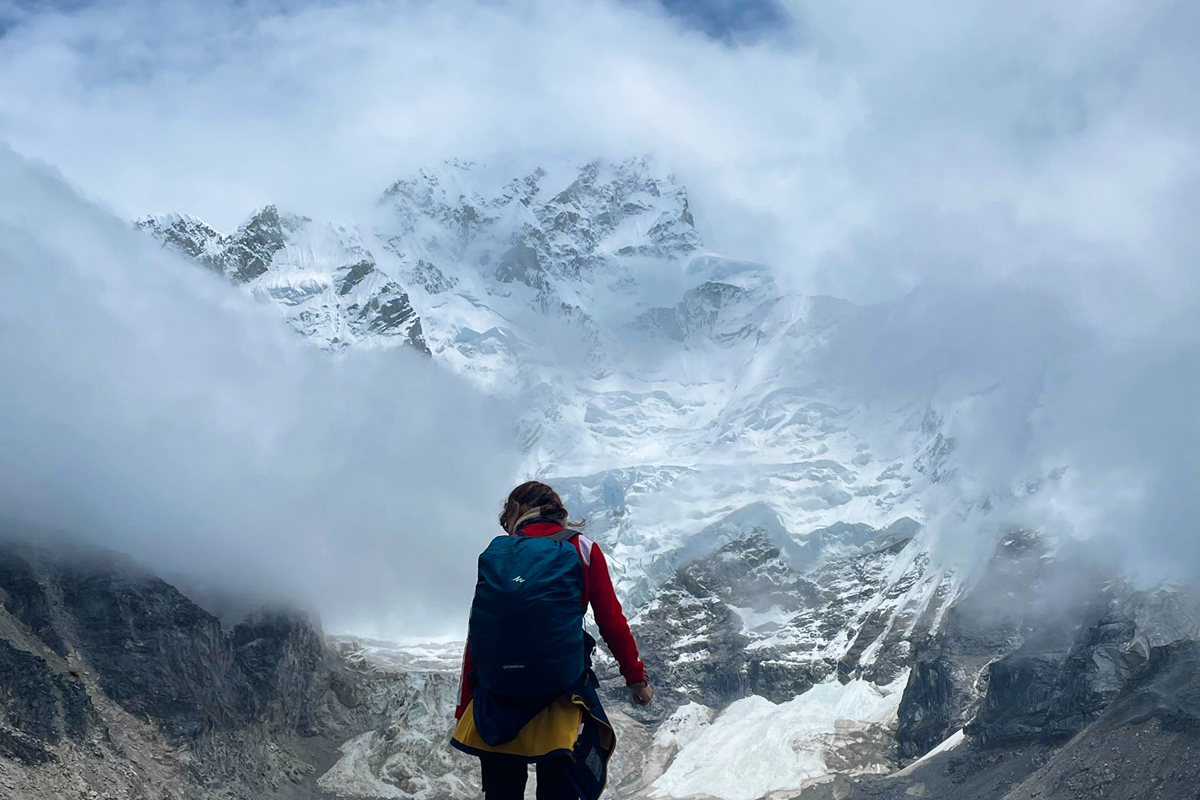
The snow conditions also get better in spring. Since the daytime sun melts the snow and it refreezes overnight, the overall snowpack becomes more stable and solid. This allows for safe travel while reducing avalanche risk. Based on the weather and snowpack conditions, guides indicate that the best climbing season is predominantly in spring.
Spring also provides clear mornings with stunning mountain scenery and easier climbing. Trekkers and climbers tell us how much easier it is to clearly see their routes and surrounding peaks in spring.
Spring is the busiest climbing season in Nepal. By April and May, thousands of hikers and climbers have arrived. Popular routes like Everest Base Camp become very crowded. Nepal approved more than 460 permits for Everest in the spring of 2023 alone.This crowding can lead to long queues, especially on narrow ridges near the summit, sometimes called "traffic jams" in the death zone.
Following Sir Edmund Hillary and Tenzing Norgay's successful ascent of Mount Everest in May 1953, the popularity of spring climbs began to take shape. Their historic achievement showed the world that spring weather proved the best conditions for climbing in Nepal. Since this time, most expeditions have opted for this time of year.
Autumn Season (September- November)
Nepal’s autumn season, (September - November) is the post-monsoon season. The air is cleaner, the skies are clear, and the mountains have some of the best views of the year after the summer rains. Peak climbing in Nepal is also ideal during this time of year. Autumn is the best time for trekking peaks below 7,000 meters, such as Island Peak, Mera Peak, Yala Peak, and Lobuche East.
The weather in autumn is stable, dry, and calm. Rainfall is very low, and after the monsoon clouds pass, the skies are usually crystal clear. Sky conditions during the day are excellent for visibility, making climbing easier as climbers can see their route clearly and stay on course and safe. Also, daytime conditions are sunny and comfortable for climbing and cool at night, but chilly, not as extreme as winter night temperatures.
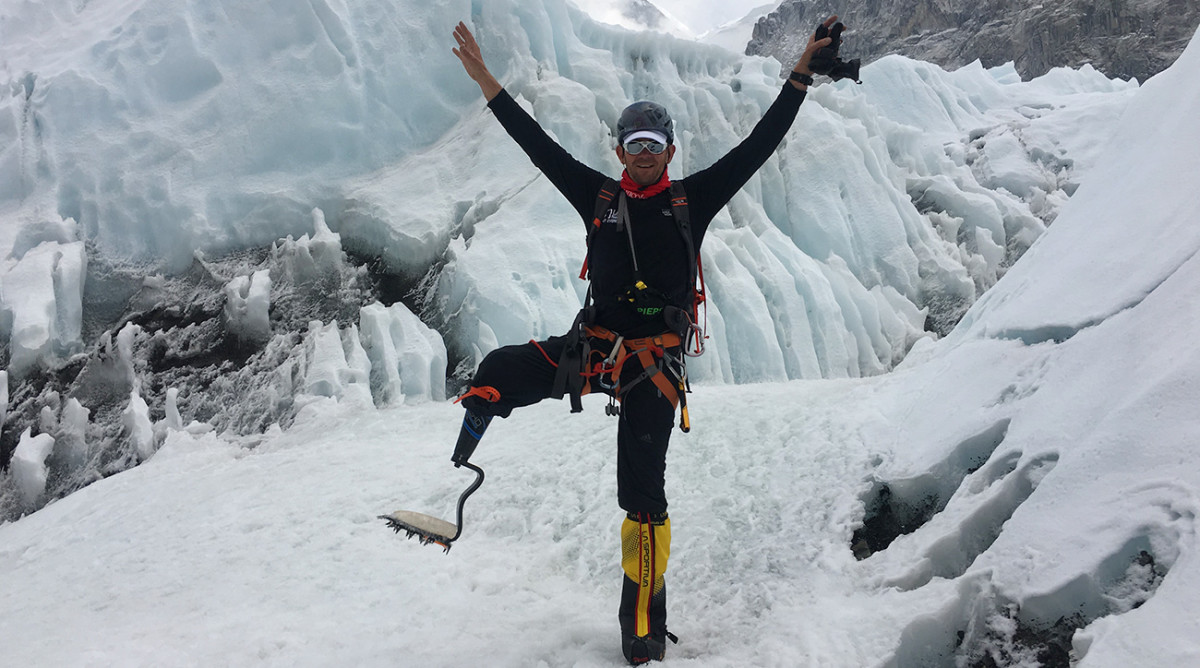
In general, snow conditions on most trekking peaks are reasonable. Because the monsoon has just finished, some trails still have new snow, but it’s still not deep enough or dangerous in most situations. Also, ice conditions were less icy than in winter, and avalanche risks during this time of the year are lower than in spring. This makes autumn a safe, optimal time for moderate peak climbing.
Fall is also favored for its long light hours and calm walking conditions. The temperature at altitude is cooler than spring but still acceptable for climbing, and there is generally very little wind in the mornings. This presents a narrow but stable window for reaching the summit.
Although fall is great for trekking peaks, it is not the most favorable season for high expedition peaks like Everest. Strong jet stream winds typically return in November, and conditions are dangerous above 8,000 meters. Most major expeditions on Everest and the 8,000 meter peaks in general avoid the fall for this reason. However, 'lower peaks’ can still see high success rates from climbers hoping to summit in fall.
Climbing Peaks in Nepal During Off-Season
Winter Season (December- February)
Climbing in Nepal during winter ( December to February) is considered off-season. While it is possible to climb, it is very rare for climbers to even attempt winter climbs due to the conditions. Winter climbs are a physically strenuous and mentally challenging task, and in general, most climbing experts would advise against doing these winter climbs unless the climber has extensive experience, understands the risks, and is fully prepared.
There are a few peaks under 6,500 meters still possible to climb during a winter expedition. Some of these peaks include Island Peak, Mera Peak, Yala Peak, Pisang Peak, Lobuche Peak, and Chulu Far East. Although the conditions are difficult, these climbs are possible with the proper equipment and gear, a reasonable fitness level, and technical climbing skills. Most high-altitude expeditions completely avoid the winter season, although there are a few known examples of successful climbs during winter months, even on Everest and Makalu. Winter climbs on peaks over 7,000 to 8,000 meters have extremely low chances of summiting, and are very high-risk climbs overall.
/check on weather conditions point.jpg)
The weather brought on by winter in the Himalayas is extremely cold, and heavy snow will be falling. Temperatures at lower elevations during the day will be colder from -5°C to 10°C, and the temperature at night can drop considerably at higher camps to -20°C or lower. At higher elevations, temperatures can often drop considerably below -30°C with the effects of wind chill. Snow covers almost all trails and it will be slippery and difficult to find your way. Climbers will need to use crampons, microspikes, and ice axes to ensure that they move safely. There will be a wide variation of snow conditions from soft powder to hard ic,e where climbing equipment will be necessary.
Advantages of Peak Climbing in Nepal During the Winter Season
- Some climbing permits may be issued cheaply in the winter.
- Hiking trails are less congested, providing some peace and calm surroundings.
- Clear skies are more common, allowing for great mountain visibility.
- Less possibility of rainfall and landslides than during the winter season.
- Disadvantages of Peak Climbing in Nepal During Winter
- A risk of extreme cold, particularly at elevation.
- Heavy snow may block trails and high passes for days.
- Most teahouses and lodges are often closed at high altitudes.
- Climbers need to organize tents, food, and cooking gear.
- The climb will technically be more difficult with ice and steep terrain.
- There is a greater possibility of avalanches in peak winter.
- Limited daylight hours restrict the time to move.
- Very few emergency services will be available if something were to happen, and rescue teams are even less likely.
Monsoon Season (June- August)
It is generally best to avoid climbing Nepal's peaks during the monsoon season (June to August). Monsoon conditions bring heavy rain, strong winds, wet snow, severe storms, and extremely low visibility. These conditions are extremely hazardous and unpredictable. Clouds and fog typically cover the mountains, making navigation increasingly dangerous and unpredictable compared to pre-monsoon trekking seasons.
The trails will get muddy, and become slippery. Travel in the low terrain becomes tiring and dangerous; on forest paths one must contend with leeches and mosquitoes. Leeches will usually not go above 2400 meters; however, in the low trail sections there can be an excess of leeches, making the climbs uncomfortable. In many places footbridges can wash away, landslides or floods can wash out a section.
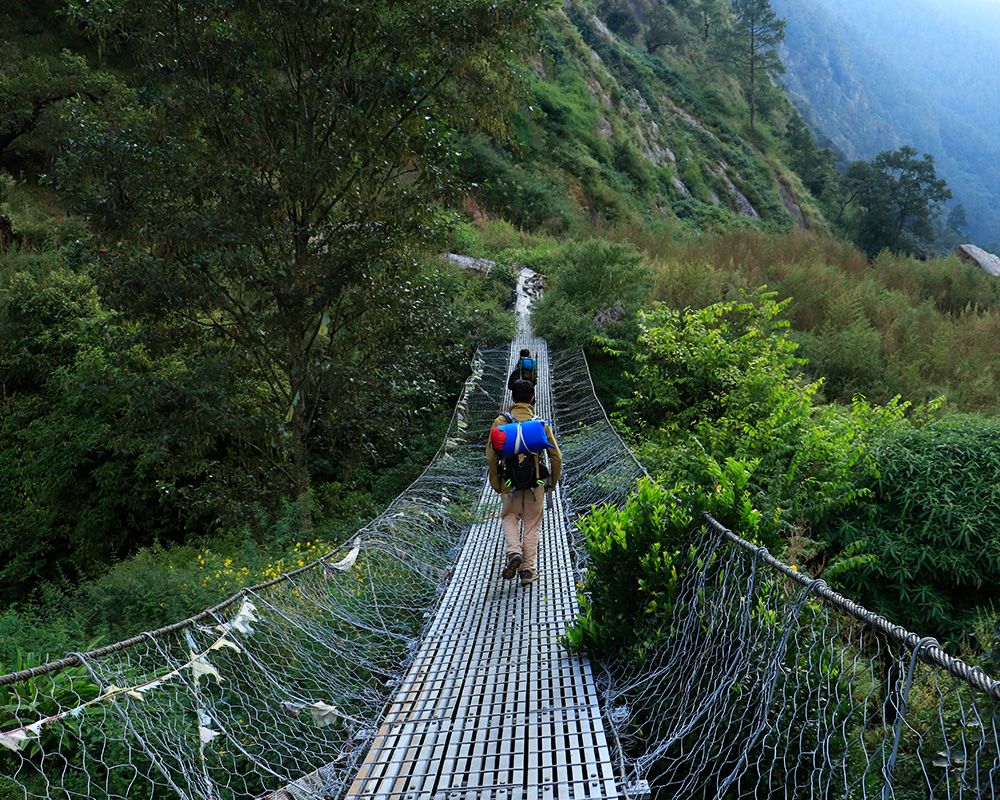
The constant rain saturates the ground and snowfields, increasing the risk of avalanches at higher elevations. The rising snowline and added moisture make the snow unstable. Crampons may be necessary even on the approach routes. Climbers have reported slab avalanches and deep new snow lingering into June and July. Monsoon conditions can change routes daily, and surprise storms may trap climbers above safe altitude levels.
Most expedition companies avoid climbing during the monsoon season. The popular season for expeditions to 8,000-meter peaks usually ends by late May to avoid the rains. Very few teams attempt climbs after that. In fact, the government officially closed Everest to summer climbs until 2025.
Advantages of Peak Climbing in Nepal During Monsoon Season
- Rain-shadow regions like Upper Mustang and Dolpo receive less rain during the monsoon, which means climbers can still trek or attempt small peaks in those areas.
- Fewer people on trails and climbing routes create a quieter experience.
- Gorgeous green landscapes flourish in lower elevations.
- Disadvantages of Peak Climbing in Nepal During Monsoon Season
- Heavy rain can cause trail damage, mudslides, flooding, and landslides.
- Poor visibility and low clouds make navigation and summit viewing difficult.
- Increased likelihood of an avalanche because snow is soaked with rain and snowlines are rising.
- Washed-out footbridges and slippery trails make for difficult and hazardous trekking and climbing.
- Usually, the weather becomes unpredictable and creates delays or cancellations without warning.
Popular Peaks to Climb in Nepal Based on Season
Spring is the best time to attempt peak climbing in Nepal, as nearly every peak can be climbed during the spring season in Nepal. There are numerous peaks to try in spring, including Island Peak, Mera Peak, Lobuche East, Chulu Far East, Tharpu Chuli, Dhampus Peak, and Pisang Peak. This is also the primary climbing season for high-altitude expeditions, including Everest, Lhotse, Annapurna, and Makalu.
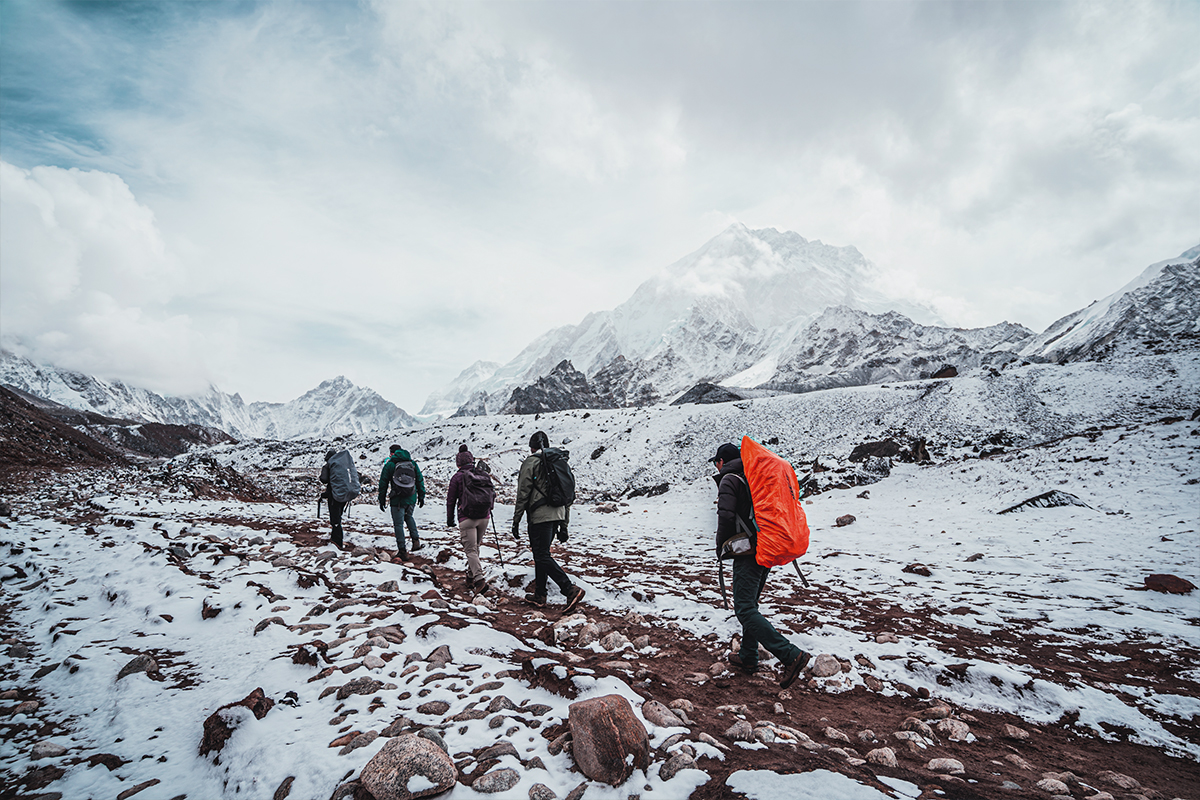
Autumn is another good Nepal climbing season with many climbers targeting those under 6,500m. Popular autumn climbing peaks in Nepal include Yala Peak, Pisang Peak, Pokalde, Naya Khang, and Tent Peak (Tharpu Chuli). Autumn is a good season for beginners to be involved in climbing, along with more experienced climbers interested in achieving technical challenges on moderate altitudes.
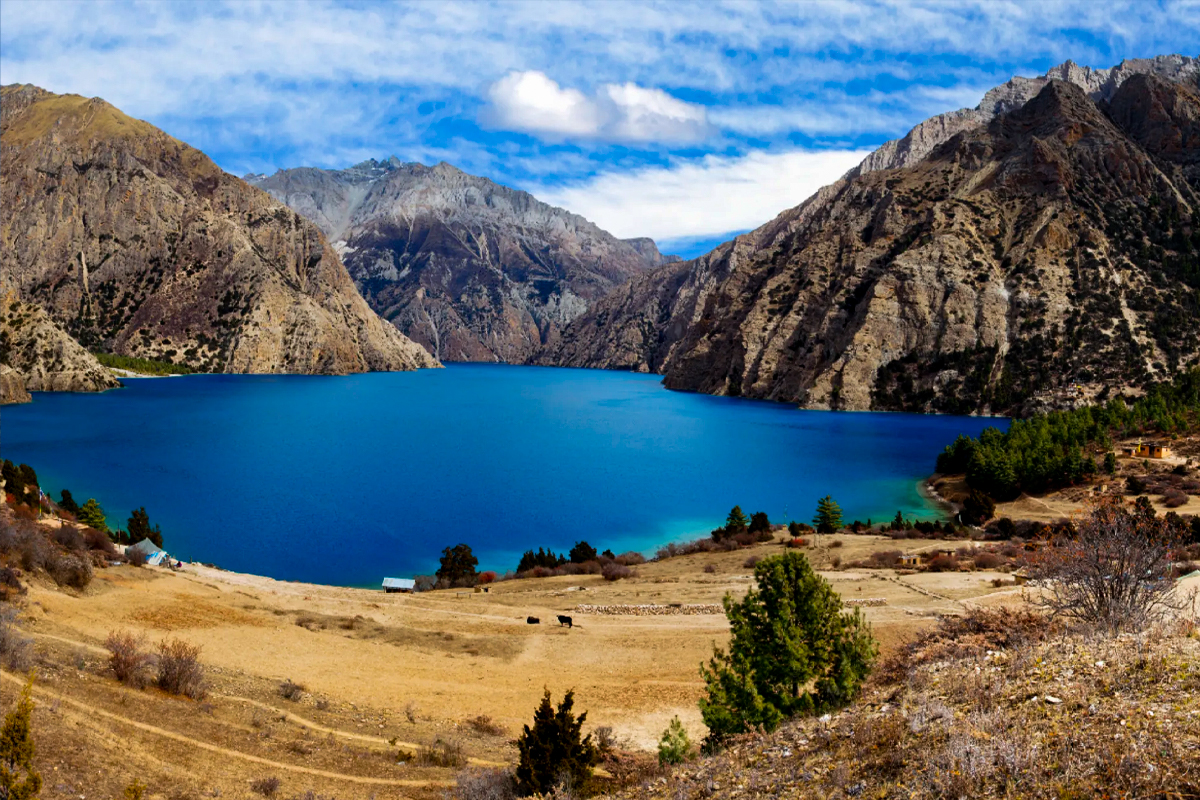
Monsoon season is rarely used for climbing, but there area few peaks that can be climbed in the rain shadow area of the monsoon, in regions such as Upper Mustang and Dolpo, with some planning climbers can attempt peaks such as Saribung Peak and Bhrikuti Peak.
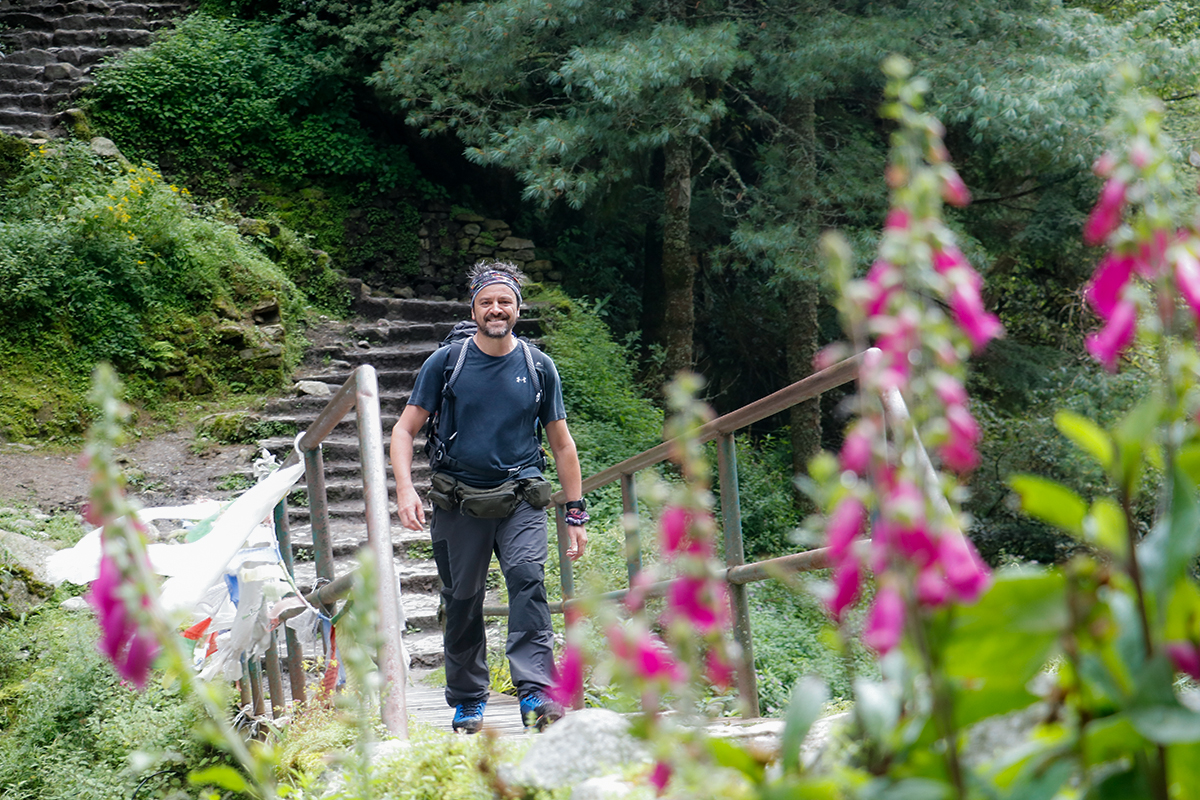
There are still some selected peaks that can be climbed during the winter season, particularly by experienced climbers. Pachermo, Naya Khang and Island Peak can be climbing choices in early winter months, however, conditions can be more difficult.
Conclusion
The ideal season for climbing peaks in Nepal is during the spring (March to May) and autumn (September to November) seasons. During these months, climbing conditions tend to be more stable, with clear skies and the safest weather conditions for climbing. Climbers tend to have an easier time navigating in order to climb and summit in these months.
In spring, it is pleasant because days are warmer and the beautiful rhododendrons blooming make the approach routes beautiful. Fall conditions following the monsoon provide clear air with great views of the mountains, crisp conditions, and stable climatic conditions that are helpful for climbers in the high-altitudes, making it the best season for peak climbing in Nepal.
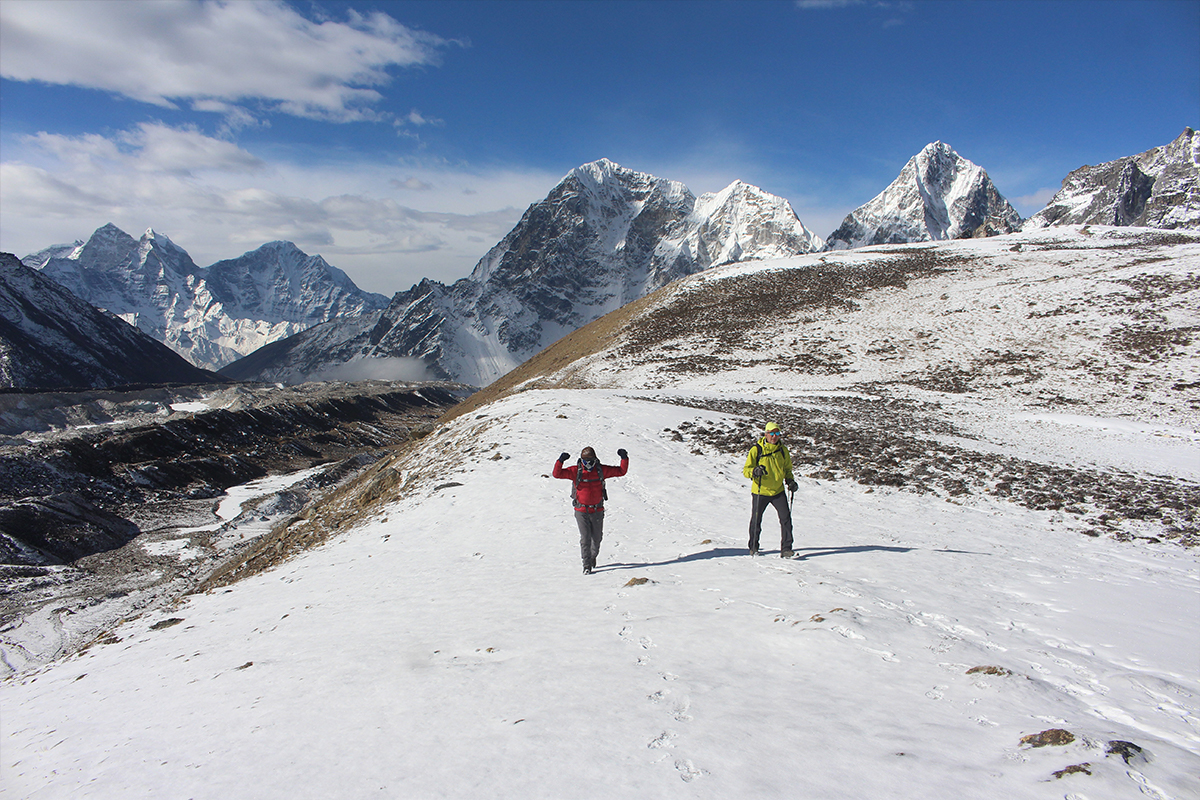
Because of the extreme cold temperatures, strong winds, and snowfall, climbers tend to avoid climbing during the winter season. While this explains why climbers tend to avoid winter, it is also important to keep in mind that one or two of the lower peaks may be climbable. However, winter climbs are a different experience from other seasons and require advanced climbing skills, special winter gear, and careful planning and preparation when conditions get extremely cold.
Monsoon (June to August) focuses on heavy rainfall and creates slippery trails, poor visibility, as well as a high risk for landslides and avalanches. Therefore, most teams don't consider climbing in the monsoon because of the dangerous and unstable conditions that exist.
Selecting the best time of year to climb a peak in Nepal is critical for your safety and success. If you are planning a peak climbing tour, feel free to reach out to us at Footprint Adventure for advice or to plan your logistics. We will help you determine when to do the expedition, properly prepare, and have an enjoyable and safe climbing experience.
FAQs
Why is spring considered the prime climbing season?
- Spring (March to May) provides predictable weather, blue skies, warming trends, and a more stable snowpack for mountains. These weather conditions lessen avalanche risks and have much more predictable climbing routes. In spring, mountaineers also have longer days to reach their camp and summit. The majority of expeditions (including Everest climbs) occur in spring.
How crowded is the peak climbing in the monsoon season?
- Peak climbing in the monsoon season (June to August) is quite limited. Heavy rainfall creates slippery trails, poor visibility, delayed flights, and a heightened risk of landslides and avalanches. Relative to other seasons very few climbers attempt peaks in this time period, and it is also rare and we don’t recommend peak climbing in Nepal during the monsoon season.
What is the success rate for peak climbing in the spring season compared to other seasons?
- Spring usually has the highest success rates for peaks. Good weather, stable snow, and long days allow climbers to complete their climbs. In winter and monsoon there are much higher failure rates because of bad weather and difficult conditions such as deep snow, heavy rain. Autumn for trekking peaks (lower than 8,000 meters) has a good success rate, but for expeditions above 8,000 meters like Everest, it is less desirable.
What permits are required for peak climbing in Nepal?
- Depending on which peak you are climbing in Nepal, you will need different permits.
- If you are climbing trekking peaks, like Island Peak or Mera Peak (which are below 7,000 meters), you will need a climbing permit from the Nepal Mountaineering Association (NMA).
- If you are climbing expedition peaks, which are above 7,000 meters (e.g. Mount Everest), you need a climbing permit from the Department of Tourism.
- In addition to a climbing permit, all climbers also need a TIMS card (Trekkers’ Information Management System).
- You will need entry permits for national parks or conservation areas along your route. For instance, if you are climbing in the Everest region, you need a Sagarmatha National Park entry permit.
Which peak is the best to climb in Nepal in the spring season?
- Spring is the perfect time to climb the popular peaks of Nepal; the weather is stable and the snow conditions are safe. Most first-time climbers go for Island Peak (6,189m) as it is the simpler route. Mera Peak (6,476m) is higher but still non-technical and could flow as a natural progression, while Lobuche East (6,119m) provides an alpine climb off the beaten path. And in the Annapurna region, Tent Peak (Tharpu Chuli) is sought after for its lovely and quiet approach.
Which is the best month to climb Everest?
- May is the prime climbing month for Everest. Most successful summits happen during the second half of May when winds calm and weather windows open. Teams usually arrive at base camp in April and generally wait for a forecast in May before attempting the final ascent.
Can I climb peaks during the monsoon or winter seasons in Nepal?
- Peak Climbing in the monsoon (June-August) or the winter (December-February) is not a good idea. Monsoon brings heavy rain, poor visibility, landslides, and flight delays. On the other hand, winter brings extreme cold, deep snow, and limited hours of daylight. There is a much greater risk of serious injury in these conditions. Only highly experienced climbers will even consider an off-season climb, and most trekking agencies are not in business during these times.
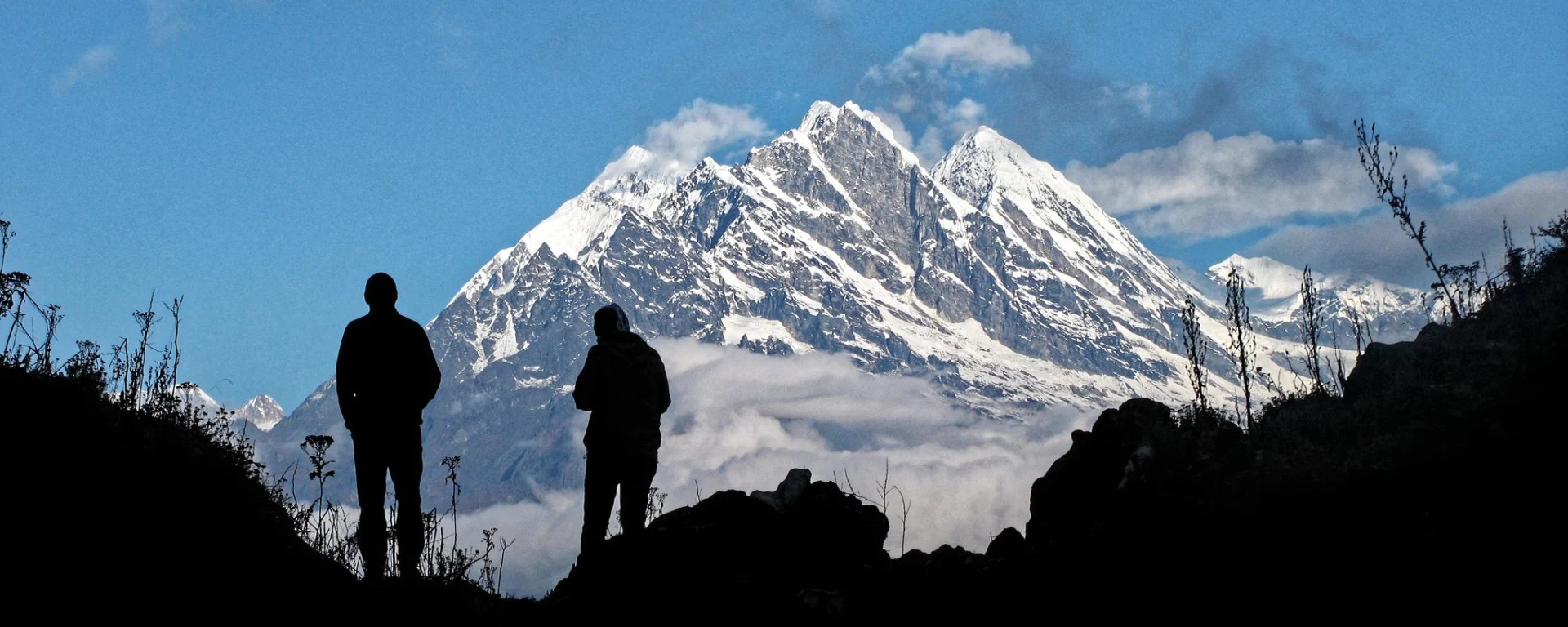

.jpg)


/check on weather conditions point.jpg)






